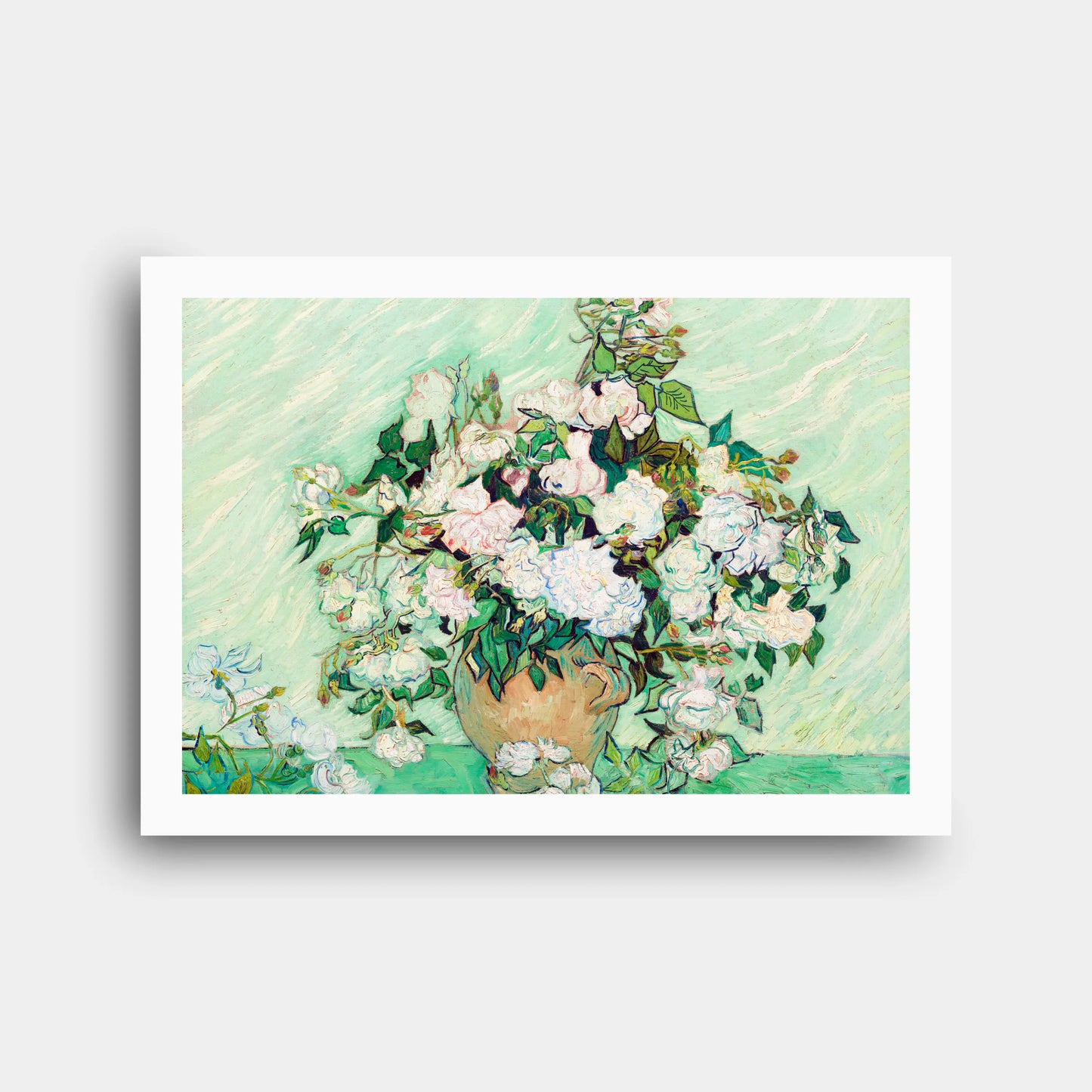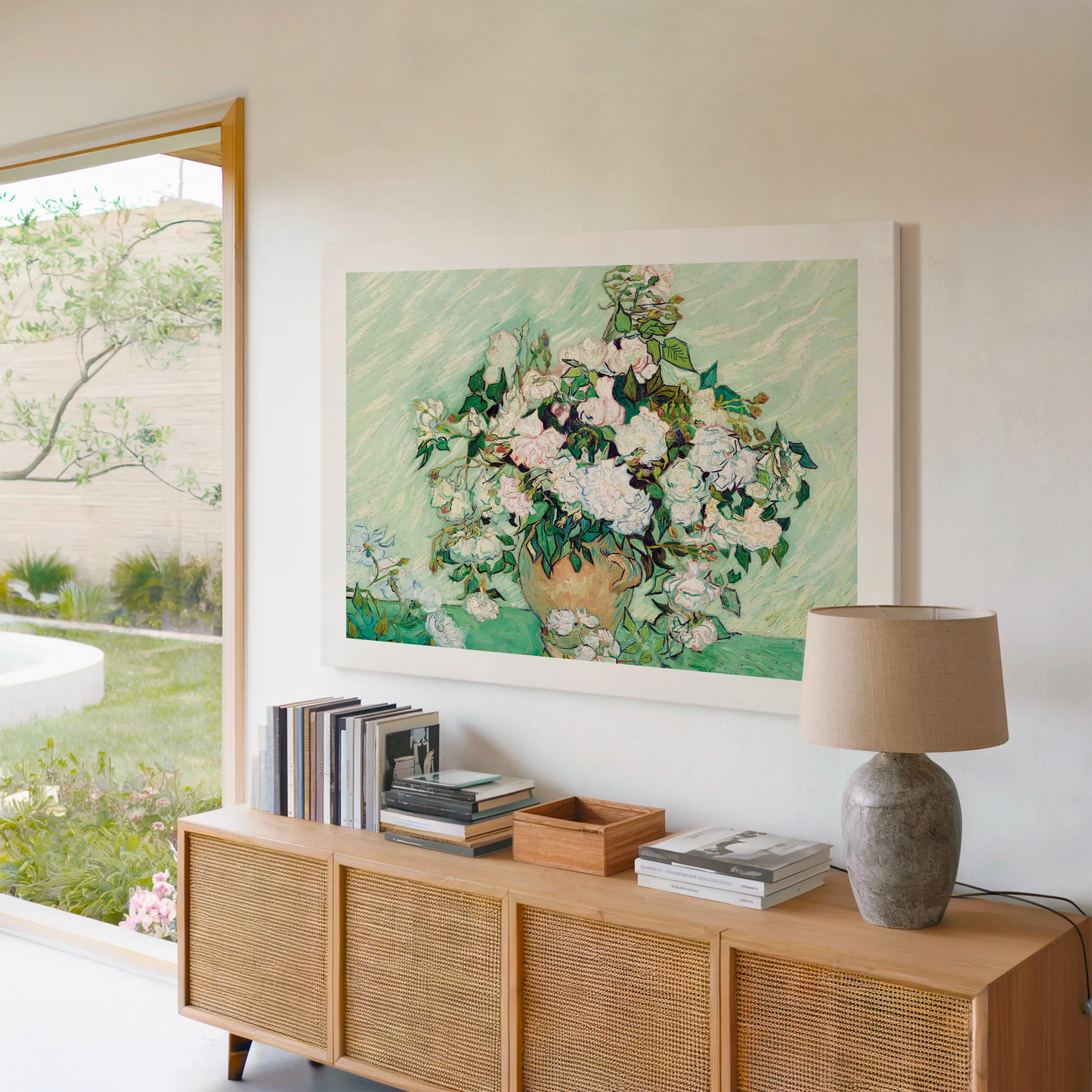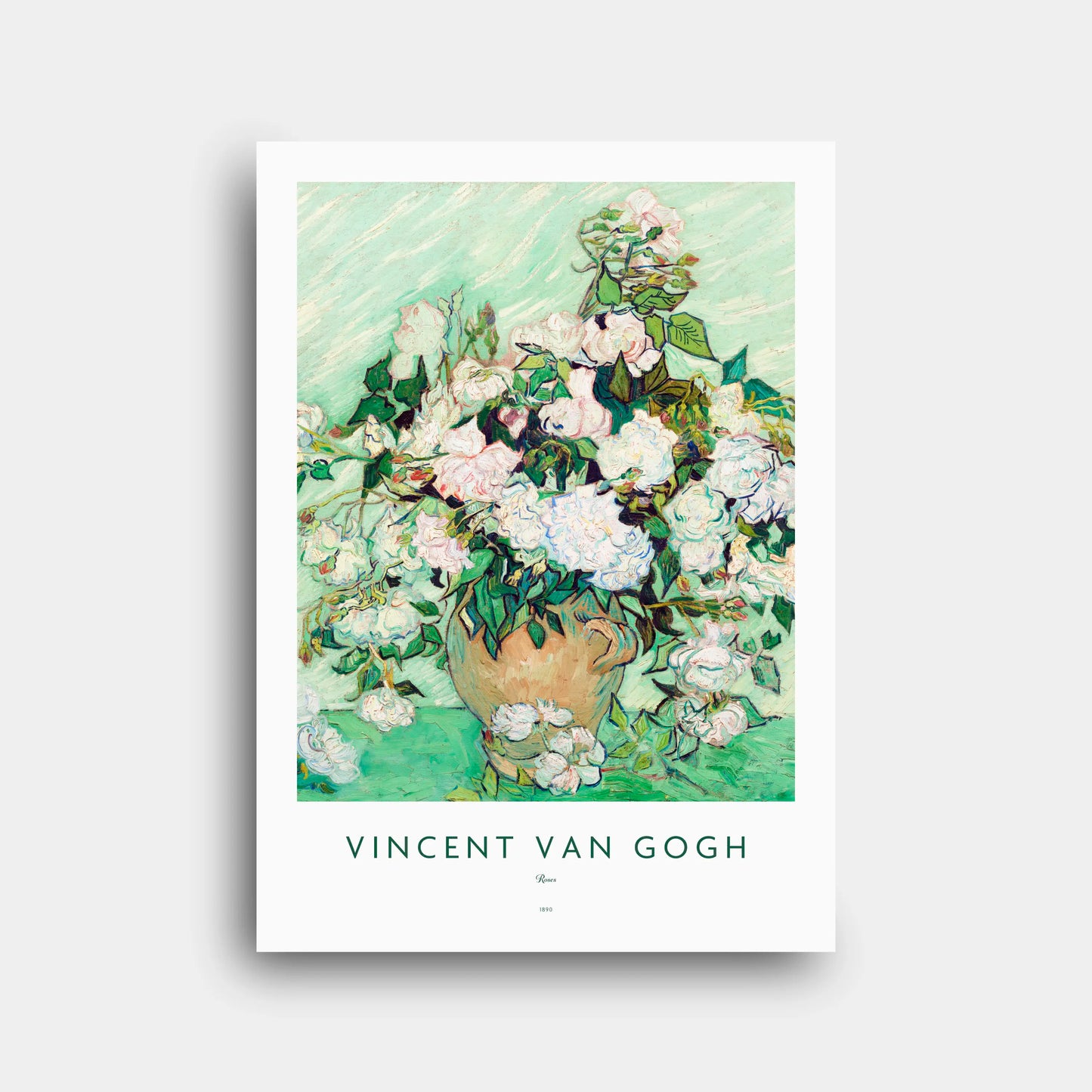Vincent van Gogh - Roses (1890) - Canvas Print N186
Vincent van Gogh - Roses (1890) - Canvas Print N186
Couldn't load pickup availability
Share
Paper Poster | Canvas Print | Digital File
1. Historical and Artistic Context
Vincent van Gogh painted “Roses” in May 1890, during his final days at the asylum of Saint-Rémy-de-Provence. At this time, he was preparing to leave for Auvers-sur-Oise, where he would spend the last months of his life. The work belongs to a small series of floral still lifes, including both “Irises” and “Roses,” painted in pairs with vertical and horizontal formats. Van Gogh saw these works as a symbol of renewal, spring, and personal rebirth after long months of mental struggle. They were his way of expressing hope and serenity before a new chapter.
2. Technical and Stylistic Analysis
The painting displays Van Gogh’s late style, marked by energetic brushwork, visible texture, and vibrant use of complementary colors. The roses, originally pink, now appear almost white due to fading pigments, contrasting against a green, swirling background. The composition balances a dense bouquet with a sense of motion created by diagonal strokes. Some flowers spill over the edge of the table, introducing asymmetry and dynamism. This interplay of order and chaos reflects Van Gogh’s evolving approach to still life—where flowers become vehicles of mood, emotion, and rhythm.
3. Symbolism and Interpretation
Beyond a bouquet of roses, the painting symbolizes rebirth, hope, and the transient nature of beauty. The roses, fading with time, mirror human fragility and the inevitability of change. The green background conveys freshness and life, while the fallen blossoms on the table remind the viewer of impermanence. Van Gogh, painting just before a new stage in his life, infused the canvas with both optimism and melancholy. It is a meditation on cycles—life, death, renewal—and on the delicate balance between joy and fragility.
4. Technique and Materials
Van Gogh used oil on canvas, applying paint in thick impasto to give texture and depth. His brushstrokes are deliberate yet expressive, layering color to create luminosity. The original pigments included organic carmine for the pinks, which unfortunately proved unstable and faded with time. Today, the roses appear nearly white, altering the intended color harmony but adding a sense of ethereal calm. His choice of green veronese tones for the background created a powerful contrast with the flowers, highlighting their presence and energy.
5. Cultural Impact
“Roses” has become a celebrated symbol of Van Gogh’s ability to transform a simple subject into profound emotional expression. It has influenced modern interpretations of floral art and inspired later generations of artists who sought to combine decorative beauty with psychological depth. Exhibited widely, the painting continues to captivate viewers with its freshness and intensity. It also highlights Van Gogh’s role in reshaping still life as more than mere depiction—it became a medium for existential reflection and a bridge between impressionism and expressionism.
6. Critical Reception and Scholarly Interpretations
Scholars interpret “Roses” as both a hopeful and tragic statement. Some see it as Van Gogh’s optimistic farewell to Saint-Rémy, while others read it as a reminder of his fragile mental state and awareness of mortality. Critics praise its bold use of color contrasts and expressive brushwork, describing it as a culmination of Van Gogh’s exploration of still life. Modern analysis also focuses on the fading pigments, which unintentionally transformed the work, adding new layers of meaning about time and impermanence.
7. Museum, Provenance and Exhibition History
After Van Gogh’s death, the painting passed to his brother Theo and later to Johanna van Gogh-Bonger. It later entered several private collections before being donated to the National Gallery of Art in Washington, where it is housed today. Together with its companion pieces—the other “Roses” in the Metropolitan Museum of Art and two “Irises” (Metropolitan Museum and Van Gogh Museum)—it was reunited in 2015 for the exhibition “Van Gogh: Irises and Roses.” This reunion allowed scholars and the public to appreciate the series as a complete cycle.
8. Interesting Facts
1. The roses were originally painted in shades of pink, now faded to white.
2. It was created in the same week as Van Gogh’s departure from Saint-Rémy.
3. The painting belongs to a quartet: two “Roses” and two “Irises.”
4. The work shows Van Gogh’s fascination with complementary colors.
5. The organic carmine pigment used was chemically unstable.
6. The fallen flowers symbolize life’s fleeting nature.
7. The swirling background echoes Van Gogh’s expressive landscapes.
8. The painting has been described as a “farewell to spring.”
9. It is catalogued as F681 (JH1976) in Van Gogh’s oeuvre.
10. Its last major reunion with its companion works was in 2015 at the Met.
9. Conclusion
“Roses” (1890) is more than a floral still life—it is a profound reflection of Van Gogh’s emotional world at the threshold of change. Painted in a moment of transition, it speaks of hope, fragility, and the eternal cycle of life. Through bold colors, dynamic brushwork, and symbolic depth, the painting transcends decorative beauty and becomes a meditation on existence itself. Today, it continues to resonate, reminding viewers of the timeless dialogue between art, nature, and the human spirit.











